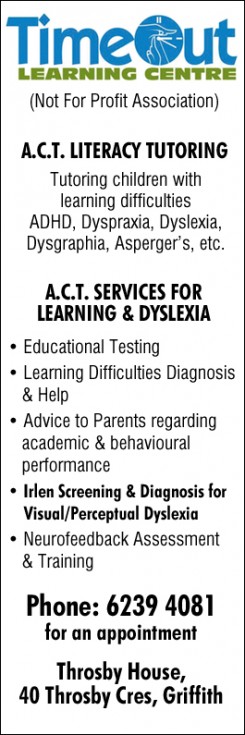We provide Neurofeedback training to help treat children and adults with a variety of common problems such as ADHD/ADD, anxiety, depression, learning and behavioural problems and much more.
This non-invasive, drug free, scientifically based methodology is provided by using an EEG linked to a computer, which gives us information about what the brain is doing. The EEG converts this information and feedback is given to the client through audio and visual stimulation. The brain’s activity is modified through a reward system where we encourage and/or inhibit certain brain frequencies to achieve the desired outcome. The responses earning negative rewards will decrease and the activity receiving positive rewards will become a natural part of the individual’s function.
Our qualified trainers offer both weekly sessions as well as intensive programmes over the school holidays to suit your needs, please contact us for more information.
Australian News Show ADHD and Neurofeedback
What is Neurofeedback?
Neurofeedback is a way to make your brain stronger and more efficient. There is nothing miraculous about it – it is a scientifically based approach. It can treat serious problems which many people suffer with for all their lives and does so without drugs or side effects. It is a treatment for Learning difficulties, ADHD, Traumatic Brain Injury, Anxiety/Depression and many other brain related problems and began with solid research into epilepsy in the 1970’s and 80’s. This research showed that the brain’s electrical functions are changeable and that people can be taught how to change them. Neurofeedback guides the client to the optimum range for a certain part of the brain which is not currently functioning well, and helps them stay there, allowing the brain to do what it does best.
There are about 100 billion interconnected cells in the brain. These cells work in an electro-chemical interaction known as brainwaves. Brainwaves can be recorded and assessed using an EEG (Electroencephalogram). The connections between brainwaves are triggered by an internal change in voltage which in turn changes the chemical reactions needed to process the task being attempted. A healthy brain works efficiently and moves smoothly from one frequency to another. A child with learning difficulties will not be able to access the right areas at the right time causing the brain to not function at an appropriate frequency.
In the last thirty years, research into brain plasticity has shown us that the brain will respond to the correct stimulation and rectify itself up to the time of death. The important thing is that it is the correct stimulation in the area necessary. Usually the whole brain is not affected, but only certain areas, which can be located using an EEG. A brain will not change unless stimulated and then it must function in that range over a period of time, so neural pathways can be built and the brain will remain at that level of efficacy.

